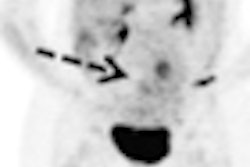
Although radiation dose in pediatric nuclear medicine procedures is believed to be low, members of the Image Gently campaign want to address the issue proactively. They're planning to discuss the expansion of the effort to nuclear medicine at this month's SNM meeting in Salt Lake City.
Since its launch in 2008, Image Gently has successfully promoted the concept of child-sized scanning protocols, particularly for CT imaging. Expanding the campaign to nuclear medicine was the focus of a session at the Society for Pediatric Radiology's (SPR) April annual meeting in Boston, where members discussed the current lack of guidelines for nuclear medicine practitioners when dealing with pediatric patients.
In his presentation at the SPR meeting, S. Ted Treves, M.D., chief of nuclear medicine at Children's Hospital Boston, cited a report from the U.S. National Council on Radiation Protection and Measurements (NCRP) that stated that nuclear medicine is responsible for approximately 12% of the total radiation exposure to all patients, mainly through nuclear cardiology procedures.
Though the NCRP report does not include estimates for pediatric radiation exposure, it is believed the rate is only 1% or 2% for young patients.
Despite the low exposure levels, Treves believes that potential radiation exposure might cause concern about the use of nuclear medicine for pediatric patients and lead to a decrease in patient referrals. "Doses in nuclear medicine are not too high, but that doesn't mean we should not make an effort to make them as low as possible," he added.
Lack of guidance
One issue that the group plans to tackle is variation in pediatric radiopharmaceutical dose. A recent survey by the Image Gently group found wide dose variation among 13 pediatric hospitals in North America, with doses varying from three- to 20-fold among the facilities in the poll. In addition, the group also found that only four of 24 radiopharmaceutical package inserts offered dose recommendations for pediatric patients.
"Right now, there is no guideline, so people have had to develop their own guideline," Treves said. "If doses can vary by a factor of three to 20, something is not right. We would like to standardize them all."
Given that lack of guidance, one Image Gently objective is to achieve consensus on optimum dose ranges for pediatric nuclear medicine. At SNM 2010, Treves plans to lead a discussion on the concept of minimal total dose, which would achieve the best possible imaging results with as little radiation exposure as possible, but is not necessarily based on a child's height or weight.
Vendor contribution
The group also wants to invite equipment manufacturers to a summit where they can discuss what they have done already for subspecialties, such as nuclear cardiology, in radiation reduction.
"Some instrumentation has been developed that can achieve images quicker and at a lower dose, but that has not been adapted to pediatrics," Treves said. "So the question is: Will they be willing to consider the possibility of developing adaptations that will make instrumentation more pediatric-friendly. That will certainly reduce the dose significantly."
Part of the answer may be the use of advanced image processing technology with PET and gamma cameras to help reduce radiation exposure for pediatric patients. Advanced 3D processing, for example, has shown the ability to obtain equal or better image information using half the radiation dose.
"Advanced image processing has a definite role and should be applicable to the existing cameras and computers," Treves added. Currently, the group is in contact with one manufacturer about advanced 3D processing technology and how it could be used in the nuclear medicine setting.
The group also has launched a campaign to better educate patients, parents, and nuclear medicine technicians about radiation dose exposure in pediatric nuclear medicine. To that end, the group has developed a brochure to provide the details about and process of a nuclear medicine procedure.
Dose and technology
To some extent, efforts to reduce radiation dose are tied into the adoption and dissemination of new technology that's capable of producing better-quality images at lower dose levels, said Dominique Delbeke, M.D., Ph.D., from the department of radiology and radiological sciences at Vanderbilt University in Nashville, TN.
"Professional organizations have to develop protocols and prioritize the one that provides the best image quality at reduced radiation exposure," added Delbeke, who has helped lead Image Gently efforts at SNM of Reston, VA. "Of course, that also implies people have the most recent software and hardware to accomplish that. It cannot be mandated, because you cannot make all imaging centers buy the latest technology, which costs money, too."
She added that nuclear medicine technologists and the healthcare community, in general, should be made aware of what technology is available and what practitioners can do in the future when advanced dose-reducing equipment comes on the market.
Image Gently currently consists of 54 organizations and approximately 700,000 physicians, technologists, and physicists.
By Wayne Forrest
AuntMinnie.com staff writer
June 3, 2010
Related Reading
U.S. children's hospitals reduce CT exam volume, April 29, 2010
Image Gently achieves global reach by 2nd anniversary, February 25, 2010
DR summit yields Image Gently CR/DR campaign, ACR dose registry, February 22, 2010
Image Gently campaign expands to interventional radiology, August 24, 2009
Image Gently campaign targets parents for 2009 initiative, February 3, 2009
Copyright © 2010 AuntMinnie.com




















